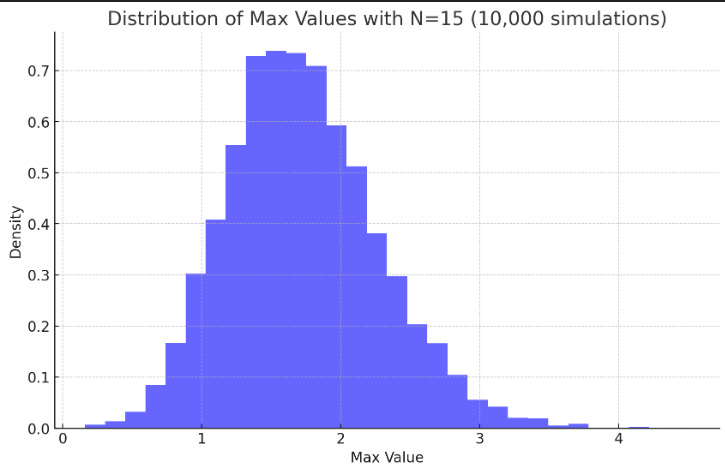Based on this tweet, some leftists are knocking my credibility because there are some minor flaws. The chart was given to me by a friend in my Discord, and while I knew it was not gravely mistaken, I did not check the exact numbers. However, the numbers are not greatly flawed. Here I will give the chart I would have produced if I had made the chart myself.
If two parents generate a large number of full siblings, the trait variance will be as follows (pg. 163)1:
With embryo selection, we’re measuring additive gene scores. So the variance of those scores will be, if we standardize the variance of IQ to 1, (h^2)/2.
You can confirm this if you imagine additive gene scores as sums of allele values. For simplicity, let the allele values be 1s and 0s.
For random people,
But full for full siblings, each gene has a 1/2 chance of being identical by descent. So siblings are only free to vary on half of the locations as strangers would vary on:
Therefore, V(G|sib) = 1/2 * V(G).
Assume if all parents take the best of 15 embryos, they are essentially plucking the 93rd percentile out of the aforementioned distribution. Each kid then has a gene score of 1.5 sqrt((h^2)/2) + parental midpoint2. The average parental midpoint is 0, so the average kid has a gene score of 1.5 sqrt((h^2)/2).
The general formula for IQ gain from embryo selection is Z sqrt((h^2)/2) where Z = phi^-1 ( 1-(1/n) ). When n is 15, it yields 1.5.
Phi^-1 is the inverse cdf of the standard normal distribution.
So if h^2 is just .7, it’s around the estimated gain in the tweet.
145 IQ parents should have mean IQ 131 children under normal conditions at h^2 = .7, assuming no shared environment variance. The SD here is sqrt(.3) * 15 = 8.2, similar to what Roseman said, but this doesn’t make much difference. These kids would be on average 142 if everyone gained 11 IQ points, on average, from embryo selection, very close to what the tweet claimed.
So the original tweet is hardly off.
Also: “1000 gametes” should be “fertilized embryos.” The botanists were really going after me over this typo. Too bad these are the same people who believe in 10% heritability of IQ, which is their main real criticism. They think this because they think there is no missing heritability and that twin studies are seriously flawed because they don’t fulfill the assumptions that are baked into them, like identical twins have environments no more similar than fraternal twins. As you can see 3 charts back, then embryo selection would only increase the mean by 2 to 2.5 points, as this guy says in too many words:
Also here:
Leftists were claiming I thought the breeder’s equation is P = G + E, not R = h^2 S. I’ve written previously on this, so you know this is not true. Here I am explaining why the breeder’s equation is true; it follows from the regression of G onto P, as I explained briefly in this article. This is not very well written, I will admit.
There are too many typos in the original tweet, in part because the chart was passed to me by a friend, but it’s not essentially wrong.
For further reading, similar estimates are given here, with some adjustment for current PGSs being bad.
A GPT simulation shows this assumption is downwardly biasing by a nearly constant factor of 0.25 SDs. I guess this is because of the tail of the normal distribution; your top 1 in 15 is extremely unlikely to be merely average, but extreme right values are still possible, even probable relatively speaking.
The distribution here isn’t normal, so this is hard to do algebraically without simulation.
From the simulation, we can use the following corrected formula:
This yields the following corrected chart for the effect of everyone taking the top 1 in 15 embryos.













